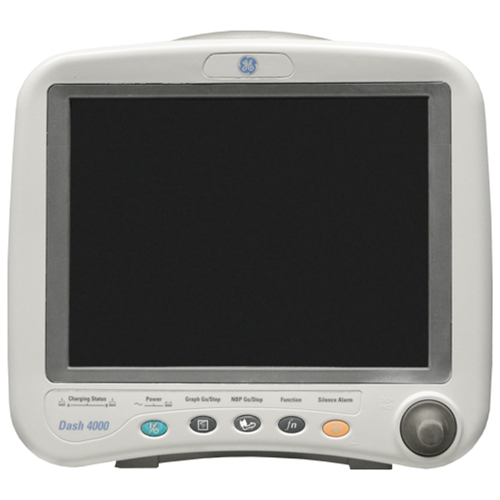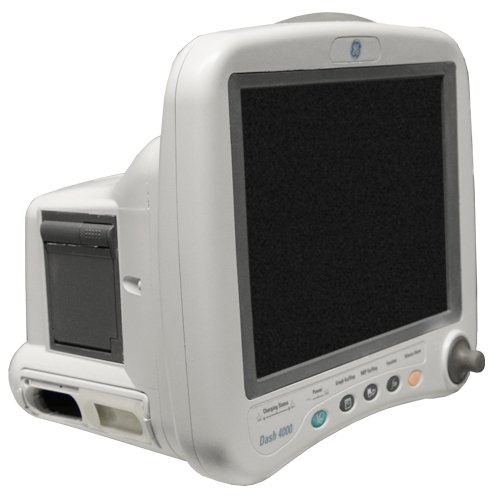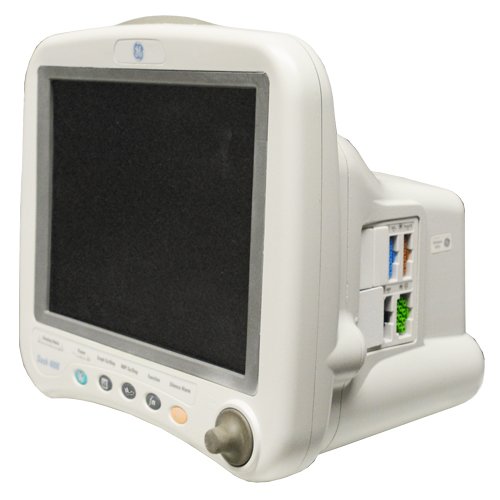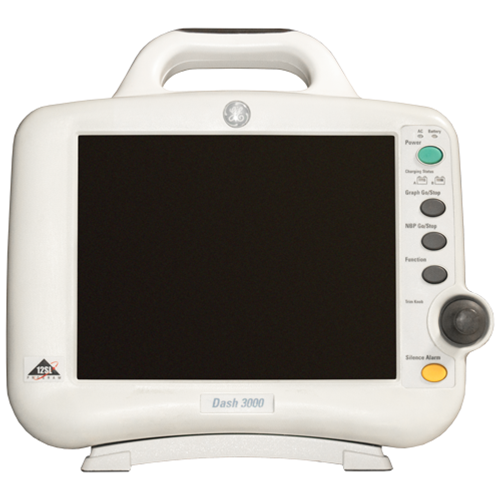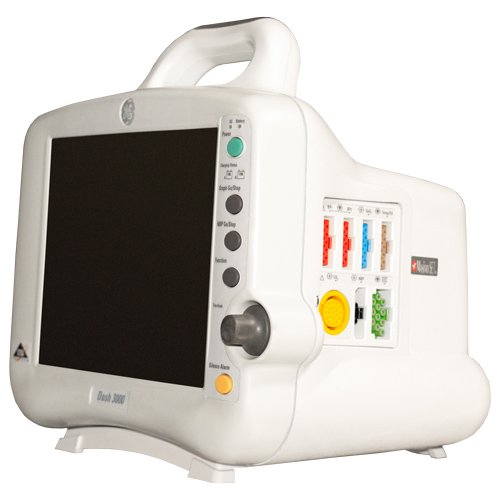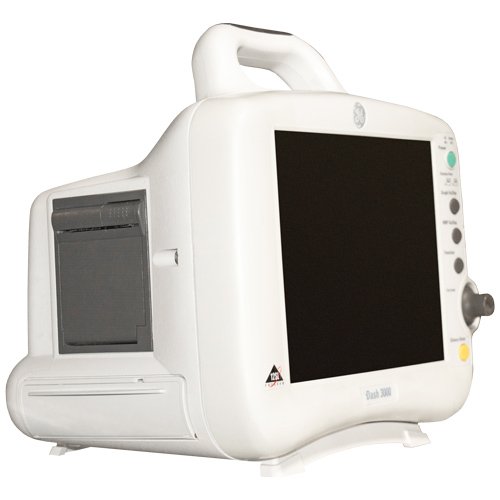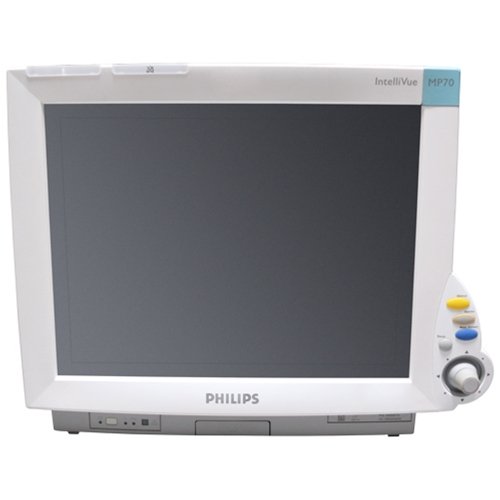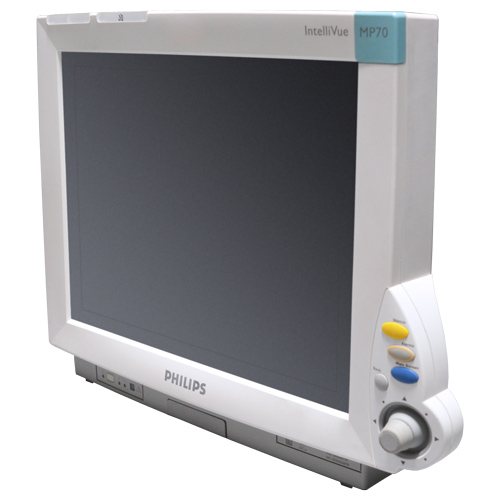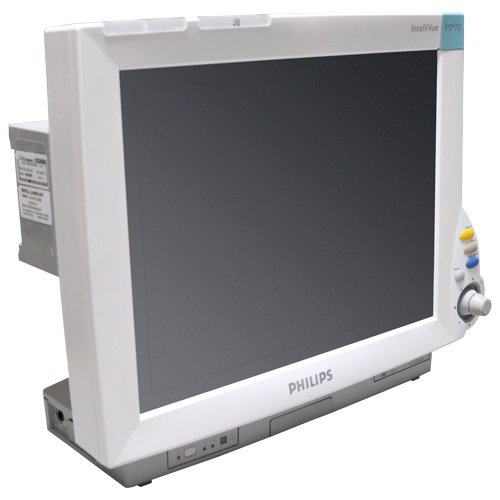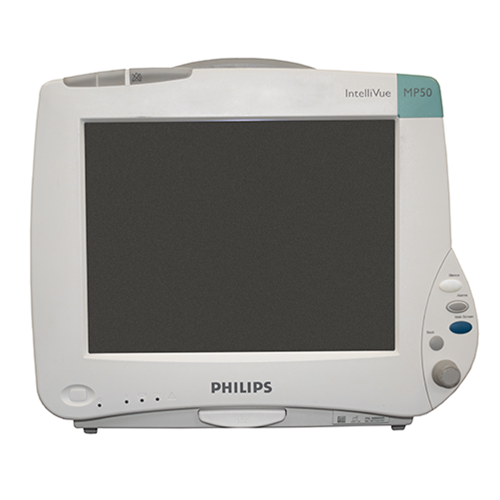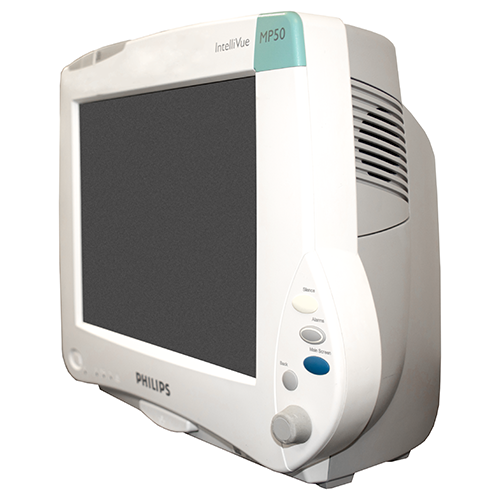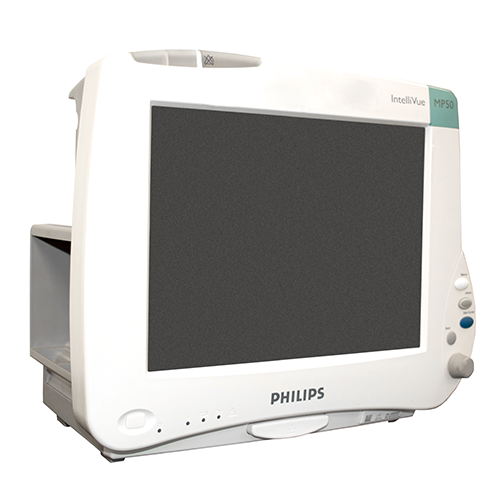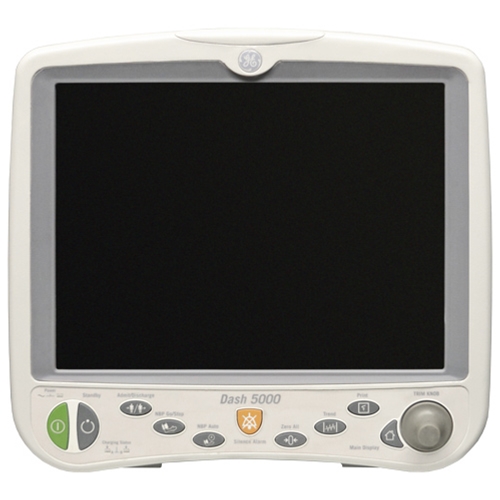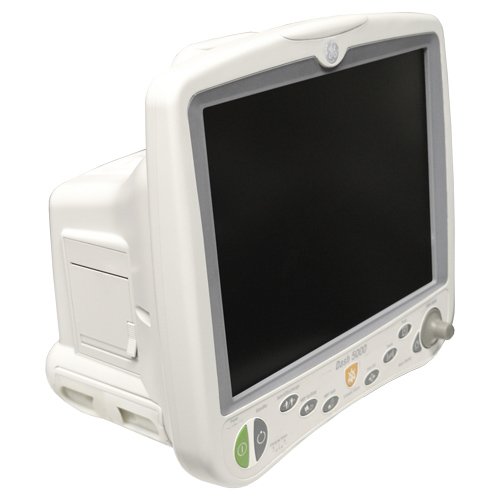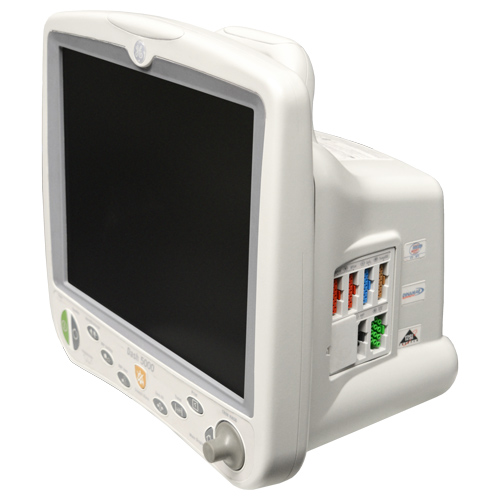GE DASH 4000
Features
The GE DASH 4000 is a portable patient monitor that has capabilities to measure ECG, NIBP, SpO2 along with many other perimeters. The Dash 4000 can connect to the GE Carescape network either wired or wireless. The GE Dash 4000 patient monitor comes with a large 10.4-inch color screen. The GE Dash Monitor also offers 12-lead 12sl, EK-Pro arrhythmia, ST-Segment analysis, and A-fib Detection. With these advanced parameters, the GE Dash 4000 can deliver personalized care for each patient’s situation. The Dash’s lightweight and durable design makes it ideal for any situation including transport, ER, Surgical Centers, and the ICU.
- Unmatched adaptability at the bedside.
- Modular flexibility
- Revolutionary chest pain care
- Early intervention in the NICU
- Gold standard NIBP accuracy
- Options: Agent Monitoring
Specifications
Dimensions
- Height: 10.7 in (27.4 cm.)
- Depth: 9.5 in (24.3 cm.)
- Width: 11.5 in (29.3 cm.)
- Weight: 5.7 kg
Display
- Size: 26 cm (diagonal).
- Type: active-matrix color TFT.
- Resolution: 640 by 480 pixels.
- Number of traces: 6 maximum.
- Number of seconds/trace: 4.9 at 25 mm/sec.
- Sweep speed: 6.25, 12.5, 25 mm/sec (with erase bar).
- Information window: displays non-real-time information without obstructing the display of real-time information.
- Display organization: prioritized by parameter.
Controls
- Trim Knob® control.
- Five hard keys: silence alarm, graph go/stop, function (zero all) and power on/off.
Alarms
- Categories: patient status and system status.
- Priority: 4 levels – crisis, warning, advisory, and message.
- Notification: audible and visual.
- Setting: default and individual.
- Silencing: 1 minute, current alarm only.
- Pause: 5 minutes in adult ICU mode, 3 minutes in neonatal ICU mode, and 5,15, or permanent pause in OR mode.
- Volume: default 70%, 70 dB measured at 1 meter.
ECG
- Standard leads available: I, II, III, V, aVR, aVL, and aVF. 10
- lead wire cable: I, II, III, V, aVR, aVF, V2, V3, V4, V5, V6.
- Leads analyzed simultaneously: I, II, III, and V (multi-lead mode).
- Lead fail: identifies failed lead.
- Alarms: user-selectable upper and lower heart rate limits.
Input Specifications
- Voltage range: ±0.5 mV to ±5 mV.
- Signal width: 40 ms to 120 ms (Q to S).
- Heart rate range: 30 to 300 bpm.
- Input impedance: common mode > 10 Mat 50/60 Hz, differential > 2.5 Mfrom dc to 60 Hz.
- Common mode rejection: 90 dB minimum at 50 or 60 Hz
Respiration
- Measurement technique: impedance variation detection.
- Range respiration rate: 0 – 200 breaths per minute.
- Base impedance: 100 – 1000 Ωat 52.6 kHz.
- Detection sensitivity: 0.4 to 10 Ωvariation.
- Waveform display bandwidth: 0.1 to 1.8 Hz (-3 dB).
- Alarms: user-selectable upper and lower respiration limits, and user-selectable apnea limit.
Temperature
- Number of channels: 2.
- Input specifications – probe type: YSI series 400 or 700,
- temperature range: 0°C to 45°C (32°F to 113°F),
- resolution: ±0.1°C.
- Output specifications – parameters displayed: T1, T2,
- accuracy: ±0.1°C for YSI series 4000 probes, ±0.3°C for YSI series 7000 probes, independent of source.
- Alarms: user-selectable upper and lower limits for T1 and T2.
Invasive Blood Pressure
- Number of channels: 2 (optional).
- Transducer sites: arterial, femoral artery, pulmonary arterial, central venous, right atrial, left atrial, intracranial, and special.
- Transducer requirements: 5 Vdc±0.1% excitation voltage.
- Transducer output: 5 μV/V/mmHg. Input specifications – range: -25 mmHg to 300 mmHg, offset: ±150 mmHg.
- Output specifications – frequency response: dc to 50 Hz (-0/+2 Hz).
- Zero balance range: ±150mmHg.
- Zero balance accuracy: ±1mmHg.
- Zero balance drift: ±1mmHg over 24 hours.
- Accuracy: ±2% or ±1mmHg, whichever is greater.
- Alarms: user- selectable upper and lower limits for systolic, diastolic, and mean pressures.
NIBP
- Measurement technique: oscillometric.
- Displayed parameters; systolic, diastolic, and mean pressures.
- Systolic: 30-275 mmHg adult, 30-235 mmHg pediatric, and 30-135 mmHg neonate.
- Diastolic: 10-220 mmHg adult, 10-220 mmHg pediatric, and 10-110 mmHg neonate.
- MAP: 20-260 mmHg adult, 20-260 mmHg pediatric, and 20-125 mmHg neonate.
- Pulse rate, as displayed in tabular trends: 30-200 bpm adult, 30-200 bpm pediatric, and 30-200 bpm neonate
Pulse Oximetry
- Parameters monitored: arterial oxygen saturation (SpO2) and peripheral pulse rate (PPR).
- SpO2range: 50 –100%. PPR range: 30-300 beats per minute.
- SpO2 accuracy: ±2% (70-100%) and ±3% (50- 69%).
- PPR accuracy: ±3 beats per minute.
- Alarms: user-selectable upper and lower limits for SpO2 and PPR.
CO2
- Information displayed: inspired and expired CO2 concentrations in %, mmHg, or kPa, respiratory rate, and continuous CO2 waveform.
- Measurement ranges: PiCO2/FiCO2: 0 to 100 mmHg/0to13%. Pe CO2/ Fe CO2: 0 to 100 mmHg/0 to 13%;
- RR: 0 to 120 breaths/min.
- Accuracy: CO2: 5% of reading or ±2 mmHg, whichever is greater.
- Display resolution: 1 mmHg. Rise time: less than 60 msec.
- Respiration rate accuracy: ± breath/min

